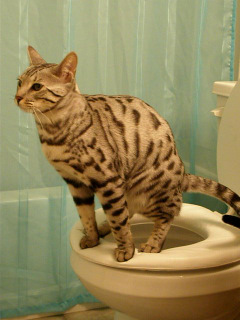Avoid Toilet Disasters: Don't Flush Cat Poop Down Your Toilet - Expert Guidance
Avoid Toilet Disasters: Don't Flush Cat Poop Down Your Toilet - Expert Guidance
Blog Article
Everybody maintains their own individual perception when it comes to How to Dispose of Cat Poop and Litter Without Plastic Bags.

Intro
As pet cat proprietors, it's vital to be mindful of just how we get rid of our feline good friends' waste. While it might appear convenient to purge pet cat poop down the commode, this method can have detrimental repercussions for both the atmosphere and human health and wellness.
Alternatives to Flushing
The good news is, there are much safer and a lot more accountable ways to deal with pet cat poop. Think about the complying with alternatives:
1. Scoop and Dispose in Trash
One of the most typical technique of taking care of pet cat poop is to scoop it right into a biodegradable bag and toss it in the garbage. Make sure to utilize a committed clutter scoop and throw away the waste quickly.
2. Use Biodegradable Litter
Select naturally degradable cat litter made from products such as corn or wheat. These trashes are eco-friendly and can be safely thrown away in the trash.
3. Bury in the Yard
If you have a lawn, take into consideration burying feline waste in an assigned area away from veggie gardens and water resources. Make certain to dig deep sufficient to prevent contamination of groundwater.
4. Install a Pet Waste Disposal System
Invest in a pet dog garbage disposal system specifically developed for pet cat waste. These systems make use of enzymes to break down the waste, lowering smell and ecological effect.
Wellness Risks
Along with ecological problems, purging feline waste can also pose wellness dangers to human beings. Cat feces may have Toxoplasma gondii, a bloodsucker that can create toxoplasmosis-- a possibly severe illness, particularly for expecting ladies and people with weakened body immune systems.
Ecological Impact
Flushing pet cat poop presents damaging pathogens and parasites right into the water system, posing a considerable risk to water environments. These pollutants can adversely impact aquatic life and compromise water high quality.
Final thought
Responsible animal ownership prolongs beyond supplying food and sanctuary-- it also involves appropriate waste administration. By avoiding purging cat poop down the commode and selecting different disposal techniques, we can minimize our ecological impact and secure human health.
Why Can’t I Flush Cat Poop?
It Spreads a Parasite
Cats are frequently infected with a parasite called toxoplasma gondii. The parasite causes an infection called toxoplasmosis. It is usually harmless to cats. The parasite only uses cat poop as a host for its eggs. Otherwise, the cat’s immune system usually keeps the infection at low enough levels to maintain its own health. But it does not stop the develop of eggs. These eggs are tiny and surprisingly tough. They may survive for a year before they begin to grow. But that’s the problem.
Our wastewater system is not designed to deal with toxoplasmosis eggs. Instead, most eggs will flush from your toilet into sewers and wastewater management plants. After the sewage is treated for many other harmful things in it, it is typically released into local rivers, lakes, or oceans. Here, the toxoplasmosis eggs can find new hosts, including starfish, crabs, otters, and many other wildlife. For many, this is a significant risk to their health. Toxoplasmosis can also end up infecting water sources that are important for agriculture, which means our deer, pigs, and sheep can get infected too.
Is There Risk to Humans?
There can be a risk to human life from flushing cat poop down the toilet. If you do so, the parasites from your cat’s poop can end up in shellfish, game animals, or livestock. If this meat is then served raw or undercooked, the people who eat it can get sick.
In fact, according to the CDC, 40 million people in the United States are infected with toxoplasma gondii. They get it from exposure to infected seafood, or from some kind of cat poop contamination, like drinking from a stream that is contaminated or touching anything that has come into contact with cat poop. That includes just cleaning a cat litter box.
Most people who get infected with these parasites will not develop any symptoms. However, for pregnant women or for those with compromised immune systems, the parasite can cause severe health problems.
How to Handle Cat Poop
The best way to handle cat poop is actually to clean the box more often. The eggs that the parasite sheds will not become active until one to five days after the cat poops. That means that if you clean daily, you’re much less likely to come into direct contact with infectious eggs.
That said, always dispose of cat poop in the garbage and not down the toilet. Wash your hands before and after you clean the litter box, and bring the bag of poop right outside to your garbage bins.
https://trenchlesssolutionsusa.com/why-cant-i-flush-cat-poop/

Do you like reading about Can You Flush Cat Poo or Litter Down the Toilet?? Leave a remark down the page. We will be delighted to hear your reactions about this blog post. We hope that you visit us again soon. Sharing is caring. Helping others is fun. I am grateful for your time. Please come visit our blog back soon.
Click Here Report this page